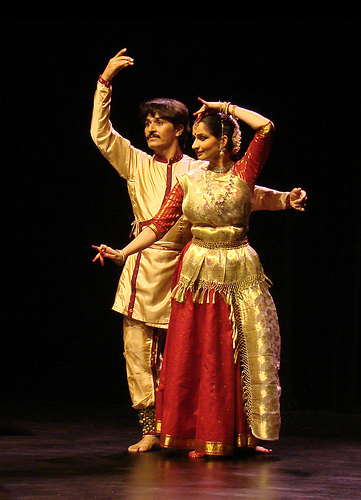Those renown for their virtuosity in the Kathak style, a hybrid of Muslem and Hindu influences, put a premium on the footwork, which alone controls the dozens of ankle bells, whose sound may range from a loud jangle to the tinkle of a solitary bell.There are of course other forms far less theatrical than this highly developed form, but Kathak is a hybrid incorporating the softer style of Bharata Natyam, the feminine part of Shiva’s dance with Kathakali or “story play” which represents a masculine and terrifying aspect and is known for its Persian inspired costumes.

—Kathak is a northern Indian style of classical dance that traces its origins back to nomadic bards who were storytellers. In fact, the word “kathak” is derived from the Sanskrit word katha, meaning story. The dance form has several influences ranging from temple dance to the Persian influence of the Mughal courts from the 16th century.
I only recently discovered that kathak had a Persian influence, but then I realized that this was evident in the kathak costume itself.—click image for source…
(see link at end)…Kathak is the classical dance of North India, famous for its fancy footwork and fast spins. Like all the major dances of India, Kathak has two main aspects: a storytelling aspect, called abinaya, and a purely rhythmic aspect, called Nritta.
“Kathak” means storyteller. Thousands of years ago, a narrative form of dramatizing the myths and stories of India’s great literature evolved into an essential part of temple and village life. Professional storytellers traveled all over North India presenting their beautiful language of symbolic gestures, called mudras. Using mime and music, they told stories. Even though their art was culturally specific, these timeless mudras and poses invoke universally understood human emotions.
The Sanskrit word for emotional aesthetics is rasa. Nine rasas are defined in the range of human emotion: love, joy, wonder, peace, anger, courage, sadness, fear and disgust.Read More:http://kathakwendy.com/dance/
Post Hindu traditional. A new homage to Shive you won’t hear in a temple. From Asana and Bill Laswell:





 COMMENTS
COMMENTS